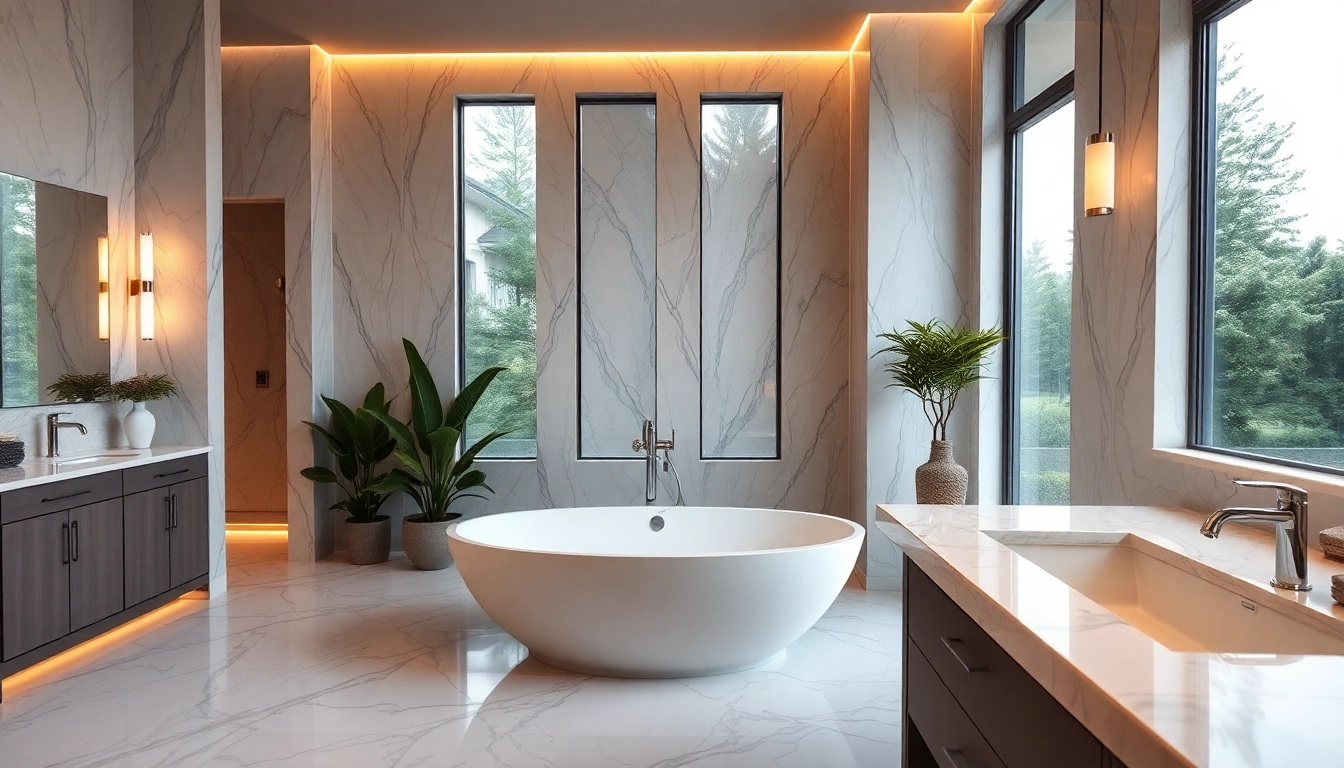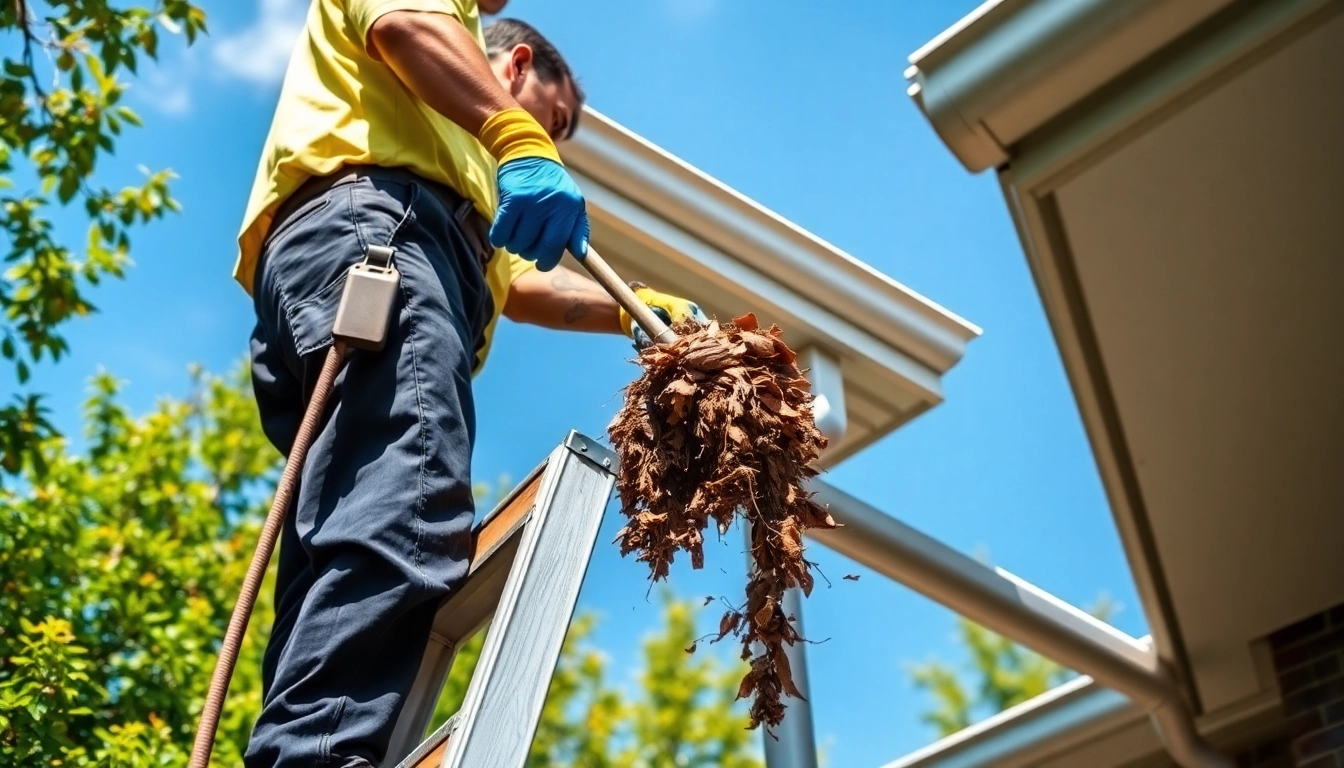Understanding Bathroom Remodeling Contractors
What Does a Bathroom Remodeling Contractor Do?
A bathroom remodeling contractor specializes in managing renovation projects focusing on bathroom spaces. This role encompasses a variety of tasks, including planning the remodel, obtaining necessary permits, coordinating subcontractors, and ensuring that the project adheres to local building codes. Key responsibilities include conducting initial consultations, assessing the needs and desires of homeowners, and developing design concepts that blend functionality with aesthetic appeal.
Beyond just overseeing construction, a bathroom remodeling contractor also plays a significant role in budgeting. They help clients determine what can be achieved within their financial parameters, offering insights on potential costs, material options, and labor expenses. This includes providing detailed estimates that factor in every aspect of the project, from fixtures and finishes to plumbing and electrical work.
Choosing the Right Bathroom Remodeling Contractor
Selecting the right contractor is paramount for the success of your remodeling project. Start by gathering recommendations from friends, family, or online reviews to create a shortlist of potential candidates. Check their credentials, including licenses and insurance, to ensure they are qualified to handle your renovation safely and legally.
When interviewing candidates, ask about their experience, especially with projects similar to yours. Request past work samples, other homeowners’ testimonials, and details about their team. Additionally, clarify how they manage timelines and setbacks. By conducting thorough research, you can find a bathroom remodeling contractor that aligns with your vision and budget.
Benefits of Hiring a Professional Contractor
Engaging a professional contractor brings numerous advantages to your bathroom remodel. First, their expertise can save you significant time and stress. They know the ins and outs of renovation processes, can foresee potential complications, and are adept at managing schedules to keep the project on track.
Moreover, seasoned contractors often have established relationships with suppliers and subcontractors, which can lead to better pricing on materials and reliable workmanship. Their experience allows them to offer creative solutions for design and functionality, helping you achieve a bathroom that meets your needs while enhancing your home’s value.
Planning Your Bathroom Remodel
Setting a Budget for Your Bathroom Remodeling Project
Before diving headfirst into your bathroom remodel, it’s essential to establish a realistic budget. Start by identifying how much you can afford to spend without compromising your finances. A well-planned budget should account for both expected costs and a contingency fund for unexpected expenses, typically around 10-20% of your total budget.
Break down your budget into categories: labor, materials, fixtures, and any additional features such as custom cabinetry or improving plumbing systems. Be clear about which elements are must-haves versus nice-to-haves, and prioritize spending accordingly. This strategic approach will help set clear expectations and ensure you stay on track financially throughout the remodeling process.
Choosing Design Styles: Contemporary vs Traditional
Your design preferences will largely dictate the look and feel of your renovated bathroom. Contemporary styles often feature minimalist designs, clean lines, and a more open, spacious feel that accentuates natural light. Materials like glass, metal, and polished stone are popular choices for achieving this look.
On the other hand, traditional designs often evoke warmth and comfort with ornate details, wood finishes, and classic fixtures. The choice between these styles can affect the type of materials, colors, and appliances you select. Collaborating with your contractor can help identify the style that aligns with your home’s aesthetic while also meeting your functional needs.
Essential Features to Incorporate in Your Bathroom
When planning your bathroom remodel, it’s vital to incorporate features that enhance both functionality and comfort. Consider upgrading to a double vanity if space allows, which can be a significant convenience in busy households. Modern showers equipped with rain shower heads or body sprays offer a luxury experience, while adding features like built-in storage solutions can optimize space and keep the bathroom organized.
Don’t forget about lighting! Layered lighting, including ambient, task, and accent lights, can transform the mood of the space. Finally, ensure the plumbing is modernized to avoid future leaks or issues. An experienced contractor can provide advice tailored to your specific requirements, enabling you to create a space that is not only stylish but also meets your household’s needs.
Executing the Remodel: What to Expect
Timeline: From Planning to Completion
The timeline for a bathroom remodel can vary depending on the complexity of the project. Typically, a simple remodel may take approximately three to four weeks from start to finish, while more intricate renovations could last several months. The process usually begins with an initial consultation and design phase, followed by demolition, construction, and finishing touches.
Planning for potential delays is crucial. Factors such as weather, supply chain issues, or unexpected structural problems can impact your timeline. Your contractor should keep you updated throughout every phase, ensuring alignment with your expectations.
Working with Your Bathroom Remodeling Contractor
Open communication with your contractor is essential throughout the remodeling process. Regular progress meetings can help keep the project on track and provide an opportunity to address any concerns that arise. Be clear about your preferences regarding materials and designs, and don’t hesitate to ask questions or request adjustments if needed.
Utilize digital tools, such as project management apps or shared files, to facilitate communication and documentation. This ensures both parties are always aligned, preventing misunderstandings and ensuring a smoother overall process.
Managing Expectations During the Remodel
Every renovation comes with its share of challenges. Understanding that inconveniences are likely to occur is essential. Prepare to handle disruptions to your daily routine, especially if your bathroom is out of commission for an extended period.
Your contractor should guide you through what to expect and offer solutions for any setbacks. Staying flexible and maintaining a positive outlook will help you navigate this transformative, albeit occasionally frustrating, process.
Cost Considerations for Bathroom Remodeling
Average Costs Involved in Bathroom Remodeling
The cost of bathroom remodeling can vary widely depending on various factors, including size, design complexity, and material choices. On average, homeowners spend between $10,000 to $30,000 for complete remodels. A simple upgrade, like changing fixtures or applying a fresh coat of paint, could cost between $1,500 to $5,000.
More intricate renovations may include changing plumbing, moving walls, or upgrading to luxury finishes, significantly increasing costs. Understanding these thresholds when planning your budget can help you align your goals with expected expenses, ensuring you get the most value from your investment.
Ways to Save on Your Bathroom Remodeling Project
Saving money on your remodel doesn’t require sacrificing quality. Start by considering minor adjustments or updates to existing layouts rather than complete overhauls, which can be significantly more expensive. Opting for mid-range fixtures instead of high-end brands can also provide substantial savings without compromising style.
Another effective strategy is to shop sales and discounts for materials and fixtures. Additionally, consider the feasibility of DIY projects for smaller tasks, like painting or installing accents. However, always be cautious about taking on larger projects without the expertise, as this could lead to additional costs if mistakes are made.
Financing Your Bathroom Remodel: Options Explained
If the cost of a bathroom remodel exceeds your available budget, various financing options may be available. Traditional home improvement loans or personal loans can provide the necessary funds. Home equity loans or lines of credit are also options for homeowners with substantial equity in their homes.
Another route is financing through contractors, many of whom offer payment plans or promotional financing options. Be sure to thoroughly compare rates and terms before committing to ensure you choose the best option for your financial situation.
After the Remodel: Maintaining Your New Bathroom
Cleaning and Maintenance Tips for Your New Bathroom
Once your bathroom remodel is complete, maintaining cleanliness is essential to preserving its appeal. Regular cleaning of surfaces and fixtures, using non-abrasive cleaning products, helps extend their lifespan. Incorporating materials that resist stains and water damage, such as quartz countertops or glass shower doors, can simplify maintenance.
Additionally, inspect caulk and grout regularly, as these can wear down over time and may require replacement to prevent leaks. Establishing a routine cleaning schedule can help keep your bathroom looking fresh year-round.
Evaluating the Completed Work of Your Bathroom Remodeling Contractor
Upon project completion, take time to thoroughly evaluate the work done by your contractor. Walk through the space and inspect all major elements, including fixtures, cabinetry, and plumbing. Ensure everything functions properly and is aligned with the agreed-upon specifications. If you notice any issues, address them promptly with your contractor to ensure they are rectified.
Feedback is also crucial. Offering constructive criticism and highlighting areas performed well can help your contractor improve their services while providing you with an opportunity to express your satisfaction or concerns.
Updates: When to Consider Another Remodel?
While bathroom remodels can significantly enhance your home’s functionality and aesthetics, you might find yourself considering another renovation down the line. Indicators include wear and tear on fixtures, changing design trends, or evolving personal preferences. If your bathroom no longer meets your needs or doesn’t align with your style, it might be time to consider another remodel.
Keep an eye on the latest trends in bathroom design, as innovations can enhance both comfort and efficiency. When you start feeling dissatisfied with the state of your bathroom, consulting with a professional contractor can help you determine the feasibility and potential costs of another remodel.




